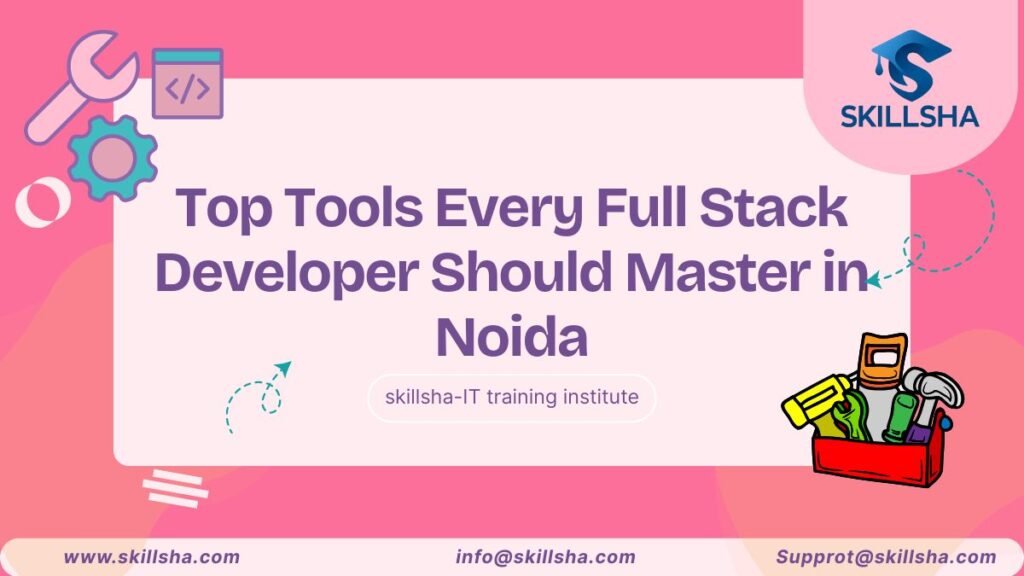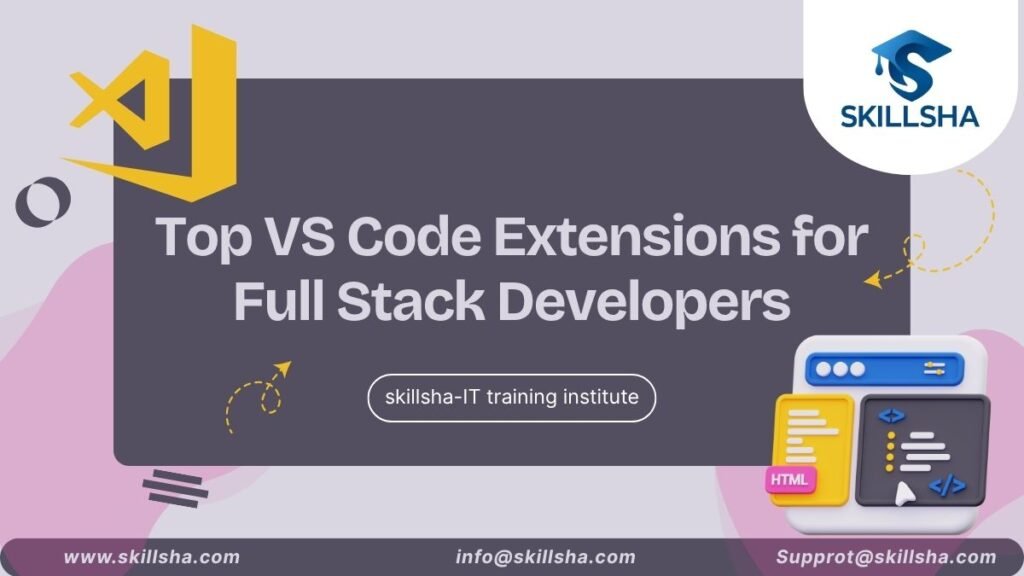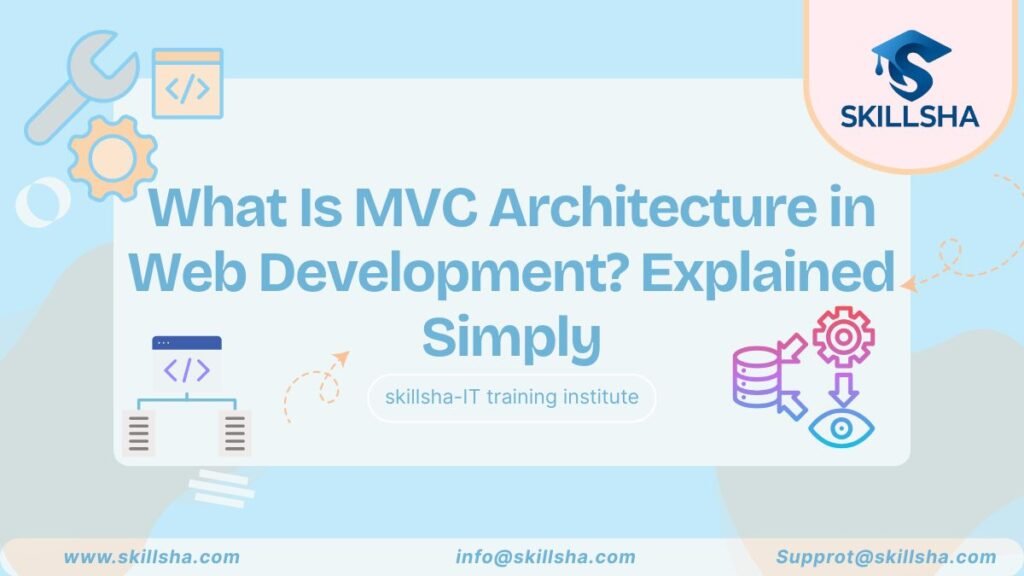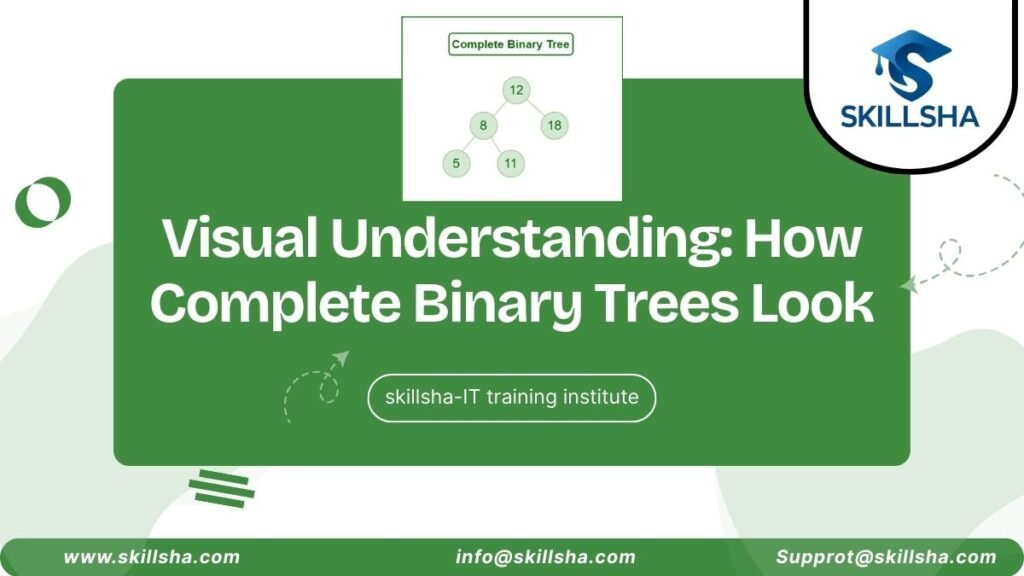Introduction
In a buzzing tech hub like Noida, full stack developers wear many hats, coding frontends, building APIs, managing databases, deploying apps, and ensuring everything runs smoothly. With new tools emerging every year, picking the right ones can be overwhelming.
This guide dives into essential tools that every full stack developer certification in pune should master in 2025. We’ll cover the entire development lifecycle, from coding and testing to deployment and monitoring, with a conversational tone, real-world examples, and helpful FAQs.
1. Code Editors & IDEs
Visual Studio Code
A favorite among full stack developers. Lightweight but powerful, with extensions for JavaScript, Node.js, Docker, GitHub Copilot, and more (best.valutric.com, whytap.in).
Why it matters:
- Git integration
- Debugging built-in
- Great plugin ecosystem (React, TypeScript, Python, etc.)
WebStorm / IntelliJ IDEA
JetBrains’ premium IDEs offer deep support for JavaScript frameworks, TypeScript, and backend languages.
Why it’s appealing:
- Smarter autocompletion
- Built-in refactoring
- Seamless Git and DB integration (rameshfadatare.medium.com, geekboots.com)
2. Version Control & Collaboration
Git + GitHub
Git is a must-have. GitHub takes it further with collaboration features like PRs, actions, co-authoring, and issue tracking (best.valutric.com).
Why full stack devs need it:
- Code versioning
- Team-friendly workflows
- CI/CD integration
3. Backend Frameworks
Node.js with Express / NestJS
Ideal for building fast, scalable APIs in JavaScript (forbes.com, medium.com).
Django (Python)
A full-fledged backend framework with built-in admin panels, authentication, and ORM support .
4. Frontend Frameworks & UI Tools
React.js
Highly popular for its component-based approach and large ecosystem (guvi.in).
Vue.js & Angularjs
Great for those seeking versatility (Vue.js) or enterprise-grade architecture (Angular).
Next.js / Qwik / Astro
Perfect for React-based SSR, hybrid rendering, and optimized initial loads (whytap.in).
5. UI Design & Collaboration
Figma
A browser-based UI tool used by both designers and developers for seamless collaboration (whytap.in).
6. Containerization & DevOps
Docker
Simplifies development and deployment with containerized environments (forbes.com).
Kubernetes (Optional)
For scaling and managing containerized systems across production environments.
7. Testing & API Tools
Postman
A staple for testing and documenting APIs (en.wikipedia.org).
Jest / Mocha
Popular JavaScript testing frameworks for unit and integration tests.
8. Build Tools & Bundlers
Webpack
Standard in React and Vue apps for bundling assets and optimizing performance (whytap.in).
Bun
A fast new JavaScript runtime with built-in features like bundling and testing (best.valutric.com).
9. Databases & ORMs
PostgreSQL / MongoDB
For relational and NoSQL use cases (guvi.in).
Prisma ORM
Simplifies database queries and migrations (rameshfadatare.medium.com).
Supabase
An all-in-one Postgres backend with authentication (best.valutric.com).
10. Cloud & Infrastructure Tools
AWS (EC2, S3, Lambda)
Crucial for deploying full stack apps at scale (best.valutric.com).
AWS CDK / Terraform / OpenTofu
Infrastructure as code tools to manage cloud resources programmatically .
11. CI/CD & Automation
GitHub Actions / Jenkins
Automated testing, building, and deployment pipelines (rameshfadatare.medium.com).
12. Monitoring & Security Tools
Sentry / New Relic
For performance monitoring and crash reporting.
SonarQube
Code analysis integrated into CI/CD (geekboots.com).
OWASP ZAP / Vault
For vulnerability scanning and secret management.
13. AI-Powered Assistants
GitHub Copilot / Tabby
Increase dev productivity with AI suggestions (geekboots.com).
ChatGPT / LangChain
Great for architecture guidance, debugging, code generation, and even agent workflows .
The AI Agent Revolution
Modern AI agents, like GitHub’s Copilot + SRE agents, can now autonomously handle tasks such as bug detection and code maintenance (businessinsider.com). As Microsoft and AWS integrate these tools deeper into dev workflows, Noida developers must adapt to stay ahead.
Tool Comparison Summary
| Layer | Tools |
| Code Editing | VS Code, WebStorm |
| Version Control | Git, GitHub |
| Frontend Dev | React, Vue.js, Angular, Next.js, Qwik, Astro |
| Design | Figma |
| Backend Dev | Node.js, Django |
| Testing | Postman, Jest, Mocha |
| Build & Bundling | Webpack, Bun |
| Databases | PostgreSQL, MongoDB, Supabase |
| Containerization | Docker, Kubernetes |
| Cloud | AWS, AWS CDK, Terraform |
| CI/CD | GitHub Actions, Jenkins |
| Monitoring | Sentry, New Relic, SonarQube |
| Security | OWASP ZAP, Vault |
| AI Assistance | GitHub Copilot, ChatGPT, Tabby, LangChain |
Real-World Noida Use Cases
- Startup in Sector 62:
- VS Code + React + Node.js + Docker + GitHub Actions = fast MVP development and deployment.
- VS Code + React + Node.js + Docker + GitHub Actions = fast MVP development and deployment.
- Enterprise in Tech Park:
- WebStorm + Java Spring Boot + Postgres + Kubernetes + Jenkins + SonarQube = safe, scalable production environments.
- WebStorm + Java Spring Boot + Postgres + Kubernetes + Jenkins + SonarQube = safe, scalable production environments.
- Freelancer:
- Supabase + Next.js + Vercel + GitHub for a streamlined indie dev stack.
- Supabase + Next.js + Vercel + GitHub for a streamlined indie dev stack.
- AI-powered apps:
- Using LangChain and agents to build custom internal tooling, an emerging trend also seen in Noida firms.
- Using LangChain and agents to build custom internal tooling, an emerging trend also seen in Noida firms.
Best Practices for Leveraging These Tools
- Start small, scale gradually, learn one tool per layer (e.g., Docker) before adoption.
- Use version control from day one, easy to automate once workflows are established.
- Invest in CI/CD early, automated pipelines reduce friction.
- Apply infrastructure as code, avoid manual config on servers.
- Integrate security and monitoring upfront, baked into workflows, not afterthoughts.
How These Tools Fit Together in Real Projects
It’s one thing to know the tools, but it’s another to understand how they work together in a modern development lifecycle. Let’s walk through a typical full stack project and see where each tool comes into play.
Phase 1: Project Setup & Planning
Tools:
- VS Code / WebStorm for writing initial boilerplate code
- Git + GitHub for creating a new repository
- Figma for UI mockups
- Trello / Notion / Jira for task planning
You start by designing the UI in Figma, set up your GitHub repo, and plan the roadmap on Trello or Jira. VS Code becomes your coding canvas.
Phase 2: Frontend Development
Tools:
- React / Vue / Angular for UI
- Next.js / Astro for SSR or hybrid rendering
- Tailwind CSS / Bootstrap for styling
- Jest / React Testing Library for component testing
You build responsive interfaces, set up routes, and make your UI interactive. Testing tools ensure that UI components behave correctly, even before integration.
Phase 3: Backend & API Integration
Tools:
- Node.js + Express / Django / NestJS
- PostgreSQL / MongoDB / Supabase
- Postman for testing APIs
- Prisma / Sequelize / Mongoose for ORM/database abstraction
Your backend handles user authentication, data validation, and API logic. Postman helps you validate endpoints, and Prisma simplifies database queries with clean, readable code.
Phase 4: Testing & QA
Tools:
- Jest / Mocha / Chai for unit testing
- Cypress / Playwright for end-to-end testing
- SonarQube for static code analysis
This is when you catch bugs, performance issues, and vulnerabilities early. Integrated CI pipelines ensure tests run automatically.
Phase 5: Containerization & Deployment
Tools:
- Docker to containerize your app
- AWS EC2 / S3 / RDS / Lambda to host services
- GitHub Actions / Jenkins for CI/CD
- Terraform / AWS CDK to provision infrastructure
- Vercel / Netlify / Railway for serverless or frontend hosting
You dockerize your app for portability, push it to a cloud provider, and use GitHub Actions to automate deployments. Terraform/CDK scripts build your cloud infrastructure from code.
Phase 6: Monitoring & Optimization
Tools:
- Sentry for error tracking
- New Relic / Datadog for performance metrics
- LogRocket / Firebase Analytics for frontend insights
With everything live, you monitor user behavior, system performance, and handle real-world crashes before users report them.
Advice for Full Stack Developers in Noida
The local tech ecosystem is growing, whether you’re applying for a startup role, freelancing, or joining an MNC. Here’s how to navigate the tool stack:
1. Master Core Tools First
- Start with VS Code, Git, GitHub, React, Node.js, and PostgreSQL
- These form the backbone of most web apps
2. Work on Side Projects
- Build and deploy real projects using tools like Supabase + Vercel + Tailwind
- Document everything in a GitHub repo with a clean README
3. Automate Early
- Use GitHub Actions for tests and deployments
- Learn Docker to mirror staging and production environments
4. Learn by Need, Not All at Once
- Don’t overwhelm yourself with everything. Learn just enough to ship, then improve incrementally.
Why These Tools Matter in Noida’s Tech Jobs
Recruiters in Noida look for developers who are not only comfortable with coding, but also know how to collaborate, deploy, and scale.
Companies love candidates who:
- Can debug using Postman + browser dev tools
- Automate builds with CI/CD
- Handle cloud infra with basic AWS + Docker
- Communicate well using Git workflows and project boards
Whether you’re aiming for a role in a product company, a digital agency, or as a freelance developer, mastering this toolchain boosts both your confidence and your resume.
FAQs – Tools Every Full Stack Developer Should Master in Noida
Q1: Which tools should beginners in Noida learn first?
Start with VS Code, Git/GitHub, Node.js, React, Docker, and Postman, a solid full stack foundation.
Q2: Do I need AI tools like Copilot and ChatGPT?
Strongly recommended! AI is becoming integral, boosts productivity by up to 30% (geekboots.com, medium.com, en.wikipedia.org, forbes.com, blog.rsroshi.dev, best.valutric.com, reddit.com, rameshfadatare.medium.com, businessinsider.com). Just don’t skip fundamentals.
Q3: Is Kubernetes essential for solo developers?
Not initially. Begin with Docker and move to Kubernetes as your app and user base grow.
Q4: How do I choose between AWS CDK and Terraform?
Use AWS CDK if you prefer coding IAC in TypeScript/Python. Choose Terraform/OpenTofu for cross-cloud compatibility.
Q5: Are paid tools like WebStorm or SonarQube worth it?
Yes, budget based. They offer productivity and security benefits, valued especially in enterprises.
Final Thoughts
The full stack landscape is rapidly evolving, AI agents, cloud-native workflows, and micro frontends are becoming the norm. For developers in Noida’s energetic tech ecosystem, mastering these tools is more than just a career boost, it’s about building reliable, scalable, and modern applications.
By embracing editors like VS Code, container tools like Docker, AI assistance such as Copilot, and cloud infrastructure management, you’ll be well-equipped to tackle real-world software challenges, no matter what your stack.
So if you haven’t already, pick one tool per layer, dive deep, and build something meaningful. Your future projects (and employers) will thank you.




